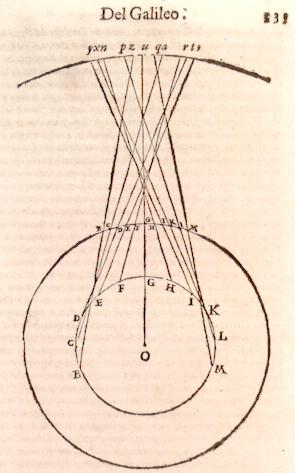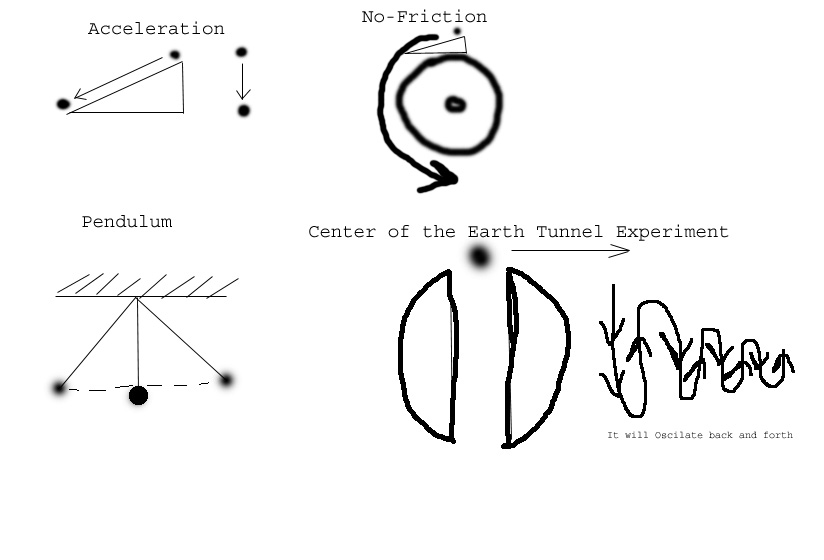
Overview of: Two Chief World Systems
The Book written by Galileo is discussing two main points about the two chief world models. The Copernican and the Ptolemaic Models.
The Two Solar Models:
Ptolemaic:
Claudius Ptolemy was born somewhere in Egypt in roughly 85 AD, but his cosmology is based largely on the philosophy of Aristotle, who lived centuries earlier. Aristotle held that the heavens beyond the moon were composed of a substance fundamentally different from the substances which compose things on earth, and hence that to these heavens belong special properties, such as inalterability. Aristotle called this substance ether, a notion which in some form persisted into the early part of the twentieth century. Ptolemy, an astronomer, mathematician, astrologer, and geographer, calculated in great detail the motions of the planets and stars on spheres and cycles and epicycles, all of which he published in his 13-volume work Almagest (meaning greatest). This system was adopted by all of Europe throughout the middle ages, finding its way into literature (such as Dante’s Divine Comedy) and theology.
Copernican:
In 1543, Nicolas Copernicus published his On the Revolution of Heavenly Bodies and thereby posited a heliocentric model. Although his views were first very controversial, his ideas were accepted by many prominent mathematicians and scientists, such as Brahe, Kepler, Galileo, and Newton, before they were accepted broadly. The Copernican model was a springboard for countless scientific curiosities that have shaped modern cosmology and physics. The model has been modified extensively since 1543—Thomas Digges argued that the fixed stars were extended in space, not confined to a sphere. Kepler added his laws of planetary motion and his own extensive observation. Galileo argued staunchly for the Copernican system and, through extensive observation, added to its detail several moons and comets. Sir Isaac Newton’s Universal Law of Gravitation provided a mechanism for planetary orbits in the Copernican system, one which was later modified by Albert Einstein’s General Theory of Relativity. Herschel discovered the planet Uranus, and after him came the discovery of Neptune, Pluto, and many more comets and asteroids and satellites of planets that compose the solar system as we know it today. Hubble and others showed the universe to be expanding, lending evidence to what is now known as Big Bang cosmology. All of this, though virtually unrecognizable from the system of Copernicus, is the result of a continual modification of his paradigm.

Points in the book are brought about in a forum style discussion with three main characters.
Characters:
Overall Notes for the "First Day":
In the first part of this first section of the book, Galileo spends quite a bit of time discussing the general nature of motion. His goal is apparently to lay the foundation for drawing into question Aristotle’s assertion that the only natural motion for earthly materials is up/down, while circular motion is reserved for the celestial bodies. If he can show that circular motion, as a natural motion, is also allowed for earthly materials, then he undercuts one of the key premises that underlies much of Aristotle’s physics.
One interesting point to note is that the notion of acceleration due to gravity is frequently discussed throughout the text, and seems to be accepted even by Simplicio, which is clearly a departure from Aristotle, who assumed that objects fell with constant velocities proportional to their weight.
Another idea that develops is the notion that an object moving laterally (perpendicular to gravity), unless impeded by some force, will continue to move with a constant velocity though no force continues to move it. This also is a departure from Aristotle and the Greeks who believed that a constant force was required to continue motion.
Through various arguments Galileo makes a case for the two natural states for earthly materials to be rest and circular motion, rather than rest and up/down motion. He argues that up/down motion is simply a transitional stage between states of rest and/or circular motion. For example, if the earth were a smooth sphere and one set a ball rolling upon it, the ball would continue to roll across the surface of the sphere indefinitely (assuming friction and air resistance didn’t slow it down). The motion of the ball would therefore be that of uniform motion along a circular arc. On the other hand, if the ball was set down on the surface with no velocity imparted, it would continue to sit at rest. Up/down motion, that is, if one dropped or threw the ball, would exist only until the ball settled onto the surface either at rest or else rolling continuously. Therefore, rest and circular motion are the two natural and eternal states, while up/down motion is only transitional.
Another concept that Galileo floats, as did Copernicus, is that matter doesn’t move (due to gravity or levity) toward or away from the center of the universe, but only the center of the earth. And likewise the matter of other celestial bodies tends to move toward their own centers. Furthermore, if we dispense with the notion that earthly matter has natural motions any different than that of celestial matter, then we can also dispense with the notion that celestial matter is any different than earthly matter. That is, the universe is made of a common matter.
This leads to a lengthy discussion of the generability/corruptibility vs. the ingenerability/incorruptibility of the celestial matter. When Simplicio points out that we never see any changes in the moon, Salviati replies (p. 55), “You say that alterations which may be seen near at hand on earth cannot be seen in America because of the great distance. Well, so much the less could they be seen in the moon, which is many hundreds of times more distant. And if you believe in alterations in Mexico on the basis of news from there, what reports do you have from the moon to convince you that there are no alterations there?”
On pages 57-58, Simplicio interprets Aristotle as making a priori arguments on the basis of principles and then supporting them with observation. Salviati, disagrees, saying that the reverse was true.
Salviati then brings out several observations which demonstrate changes in the heavens over time: sun-spots, comets, temporary stars (supernovae), and the change over a long time span of the celestial poles.
Galileo spends the latter portion of the First Day discussing the moon. His main points are: the moon is similar in many ways to the earth; it has mountains, valleys, and plains; it is dark (doesn’t shine with a light of its own); the earth and moon reciprocally illuminate one another with reflected sunlight.
Galileo then goes into detailed arguments from optics to prove the roughness of the moon’s surface.
Toward the end of this section, Galileo speculates on the possibility of life on the moon. He conjectures that if there was life, it would have to be much different than on earth. Reasons are: the length of the lunar day; no rain (no clouds seen); no visible oceans; not as much variation in sun’s latitude to create seasons.
Specific points from the "First Day":
Class Graphs from the "First Day":
